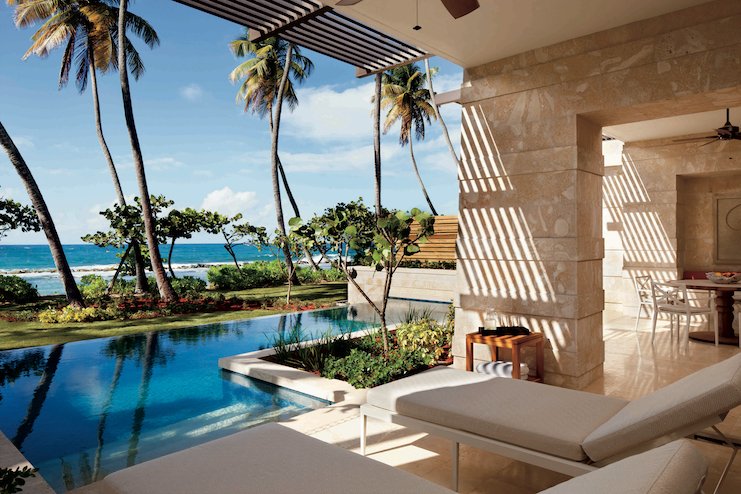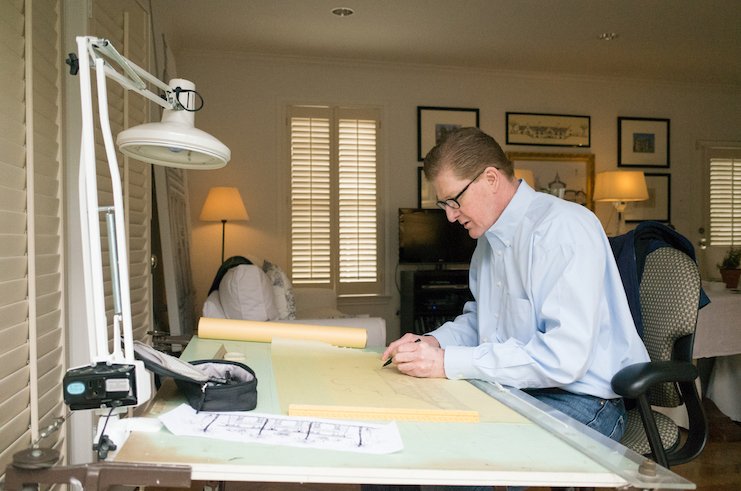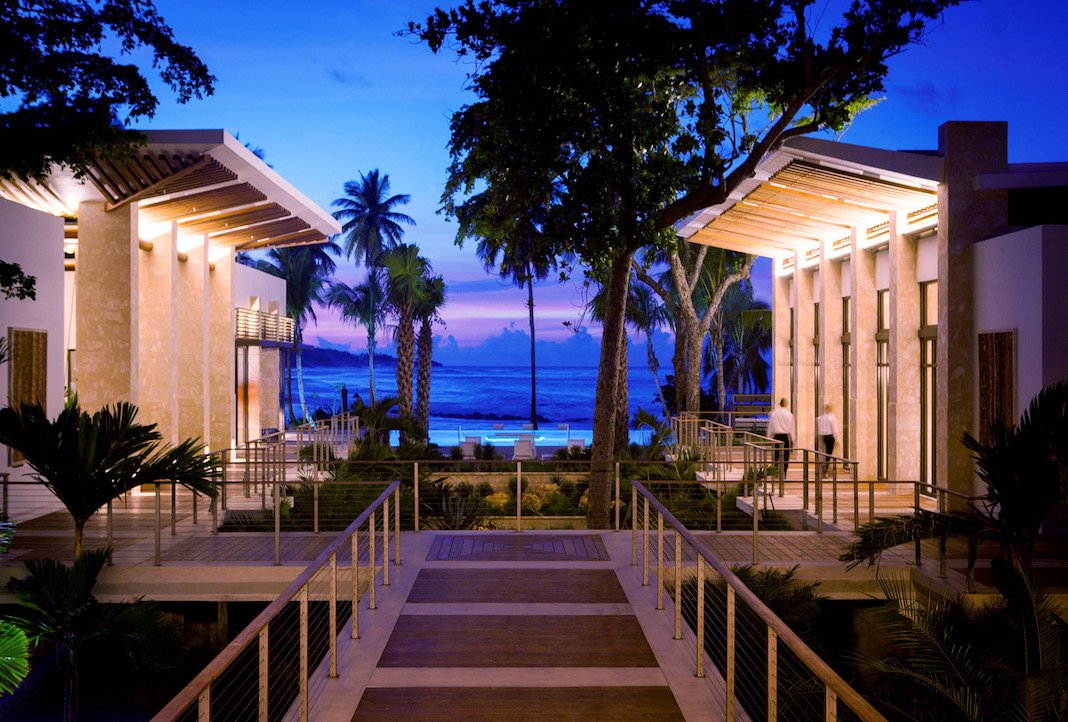Arriving at Dorado Beach, a Ritz-Carlton Reserve in Puerto Rico, is an experience in and of itself, according to Michael Crosby, design director of Wilson Associates’ Dallas studio. Crosby recalls the first time he visited the property a decade ago to work on its original design. The evening had settled as he drove along a coastal road with trees arching over him and lush life all around. “You pull up to the guardhouse and when you open the window, you hear these tree frogs, and that’s very enchanting. It’s a memory that stays with you,” Crosby describes. “Then, you make your way down this lovely kind of driveway, right down to the beach, and there it is. You’re right on the ocean. It’s tranquil. It’s beautiful.”
Hurricane Maria disrupted that tranquility as it tore through Puerto Rico in September 2017. The storm’s impact and its aftermath caused an estimated 2,975 deaths, according to reports from the Puerto Rican government. Puerto Rican residents and businesses in industries like travel were left staring down the long road of rebuilding their lives and livelihoods. Ever resilient, Puerto Rico declared itself open for tourism by December of that year. While parts of the island are still feeling the storm’s effects, much of the tourism industry has rebuilt itself over the past year and is actively welcoming tourists.
Dorado Beach celebrated its grand reopening this past November—a significant milestone for the island’s travel and tourism industry, which, in 2017, accounted for 7.2 percent of Puerto Rico’s GDP and directly or indirectly supported 61,500 jobs or 6.2 percent of total employment, according to the World Travel & Tourism Council. Since Hurricane Maria, the investment in new hotel development in Puerto Rico has equated to a total of $1.9 billion and added 2,900 jobs, according to Discover Puerto Rico, a private, not-for-profit destination marketing organization.

While Dorado Beach’s buildings held up through 11 hours of pummeling winds and through the storm surge, Hurricane Maria had completely altered the reserve’s vegetation, tearing up trees and shearing canopies. Following the storm, the prolonged loss of power and air conditioning opened the interior to intense humidity. “Everything went moldy, and that’s where the real cause of the damage was,” Crosby explains.
Ten years after working on the design of Dorado Beach, Crosby returned to lead its restoration efforts. “It was very surprising going back there and seeing this mountain of debris on the one golf course,” he says. Since the property was already approaching its seven-year renovation cycle in 2019, the owners decided to shift plans and replace FF&E and undergo other restoration efforts a year earlier, allowing Dorado Beach to become fully operational again as quickly as possible.
Crosby says that the prototype process had to be fast-tracked because of the circumstances. A Miami-based procurement agent worked directly with manufacturers to source FF&E as locally as possible and ship the items straight to San Juan. “There was no model room process like you’d normally have, which would have taken months,” Crosby explains. During the restoration process, Crosby stayed at a building on the property that had experienced less damage, using one of its rooms to showcase the team’s design presentation with fabrics and furniture finishes that he brought along with him. “For the presentation, we would lay a piece of fabric out on a chair or table and say, ‘This is what it’s going to be like,’ so everybody had to try to visualize,” he says. “That’s how we did the approval process. It was presented and approved in four hours, and then we went straight into production after that.”

Because guests have grown to love the property, the owners did not initially want to make too many changes, Crosby says. “The idea was to keep the DNA intact from the previous design as much as possible.” The property has a rich history dating back to when Laurance S. Rockefeller opened the resort more than half a century ago—a legacy that the 2008 design team considered when initially developing its aesthetic. The team kept certain undamaged guestroom elements consistent during the post-hurricane restoration process as well, including the headboard walls, the location of beds, the bathrooms, the architecture, and the built-in woodwork. “We came up with fresh new color schemes and color palettes just to ensure it would be appropriate for the renovation that would be upcoming anyway,” Crosby says. Guestrooms received new floor lamps, custom bed throws that match the color scheme, and other soft goods.
The refurbishment also provided an opportunity to take a second look at the design and introduce new elements and products, Crosby says. For example, the design team re-evaluated a double queen room, realizing that it could fit a double king configuration that is well suited for families. They also chose more durable outdoor fabrics and finishes for oceanfront conditions.
Hurricane Maria has had a lasting impact on Puerto Rico. However, much of the island’s tourism industry has been rebuilt. Just as some areas seem unchanged and some are altered for good, Dorado Beach has been adjusted but remains familiar to enchanted visitors like Crosby. When you arrive at Dorado Beach and roll down your car window today, he says, you’ll still hear the tree frogs.












